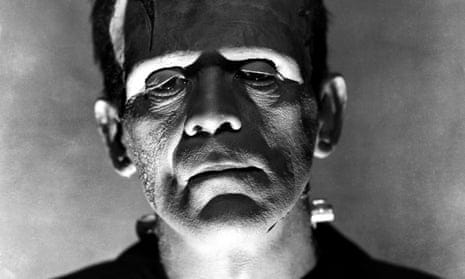“Was I then a monster, a blot upon the earth, from which all men fled, and whom all men disowned”
Every day I open my feed to some configuration of an angelic-faced Sylvanian sitting beside a copy of Sylvia Plath: Selected Texts. The word girlhood is overlaid in a baby-pink font.
Not so long ago, I rejoiced at the performance of girlhood mania – kneeled keenly at its altar of Lana Del Rey lyrics, pastel pink and hair bows – all the things masculine culture had taught us to discount.
However, now it all just unfurls that quote from Stuart Hall where he said: “yesterday's deconstructions are often tomorrow's orthodox clichés”.
The collective interest in girlhood has been shoehorned into a matrix of products and singular aesthetic (see: Sylvia Plath’s The Fig Tree, The Cranberries, the imagery of dears/lambs, mary jane shoes). Through the subculture’s staunch loyalty to consumption, girlhood mania now operates more like a shopping category than a collective moment. I know, so original, an essay on the commodification of girlhood.
But we’ve re-dyed the bubblegum pink of girl power with the pastels of coquette and reconfigure its mission statement. We reinvent the wheel, and then realise we don’t know where we’re going.
Yesterday’s Deconstructions
I do think it was once a meaningful deconstruction. The assertion of girlhood emerged from a very genuine, and generation transcending, quest to find a women’s culture, produced by women's lives amongst themselves. All of us knew the deficiency of a women’s culture (the term women here I use as a fluid category that’s untethered to sex) before we even had the language to diagnose the void. I could feel it: a brooding gap in my consciousness.
In Luce Irigaray’s theory, she claimed this lack of a women’s culture was the kindle of women’s subjugation. The French philosopher said that women remain “the sex which is not one” because woman, as a category, lack the history, symbols and mythology known to other social groups. While her ideas were shockingly myopic, Irigaray does accurately conceptualise the feelings of the women she represented: the women who dominate the mainstream discourse (both in her time and today). Irigaray remained hopeful that a women’s culture throughout time does exist, we just need to excavate it.
The girlhood/ “just a girl” subculture was born out of the feeling Irigaray described. A lack of a women’s culture and the urgent desire to create one. Women looked at their lives, mustered up the seemingly universal experiences and fashioned a subculture to congregate around.
The reappropriation of the symbols and objects used to Other women felt shrewdly purposeful. It was mimetic in its performance – literally performing femininity to a point of nonsense – and finding comfort amidst that babble.
Today’s orthodox clichés
What was once a memetic and meaningful act has grown tinged with capitalism. We perform the toxic femininity of 00s with a myopic focus on consumption, piety and self-curation. A generation of Lolita-baby dolls is born – not with a mindfulness for how obscene it all is but an overt belief in its absolution.
Maybe it all emerged under the elusive guise of irony – but it feels very genuine in the grasp of big corporations (influencers included). Nonsensical, not because it's an over-performance, but because the traditional concepts of gender at work are nonsense.
Traditionally girl-y aesthetics are not problematic – but the glamourisation of those aesthetics as the singular expression of girlhood is. Particularly when it blurs into the realm of essentialism (have you seen the rise of the buzzword feminine energy).
Whilst once joyous, the girlhood trend has started to take a melancholic inflection. I believe we have once again become entrapped in what Wittig described as the familiar deadlock of “woman is wonderful.” “What the concept “woman is wonderful” accomplishes is that it retains for defining women the best features which oppression has granted us …”
With the gift of hindsight, the culture of girlhood now feels poisoned. Men get the triumphs of ancient history, we get the ephemera of our feminine performance: hair bows, mary-janes and dresses. We attempt to establish a sense of personhood through the stuff on our bedside table. We have not crafted a culture but a shopping category, complete with shoppable links and commercial sponsors.
“It puts us in a positon of fighting not for the disappearance of our class, but for the defence of “woman” and its reinforcement.”
The Creature
Under a Tamboran-ashed sky on Genova, Mary Schelley penned her iconic work Frankenstein at the age of 19. The novel would begin a touchstone of horror fiction, masterfully grappling with the themes of creation, humanity and evil. The gravitational pull felt by young girls to Schelly cannot be overstated. She’s the patron saint of freaky girls and I cling to her weirdly gothic text like it’s something holy.
Lately, girlhood culture has begun to mirror the monster of Frankestein – a deformed amalgamation of lifeless things and objects, stitched together with hair ribbons. It’s an attempt at a life that’s a mix-match of products and pink.
Alike the monster, girlhood once seemed considered and sensitive – a well-deserved space to play and expand. But once it left it’s creators arms and ventured into the world, it’s appearance grew frightening. Just a manticore, made of re-generated tokens from childhood.
“[the creature] is eloquent and persuasive, and once his words had even power over my heart; but trust him not. His soul is as hellish as his form”.
My shunning of girlhood core has me immediately caught in the cycle of assessing whether I’m being problematic – a-tried-and-true pick me shaming something because it’s explicitly girly. Another clog in misogyny’s machine hating any signs of women. But I don’t hate this because it’s a by-product of women, I think I fear it because it simply isn’t.




